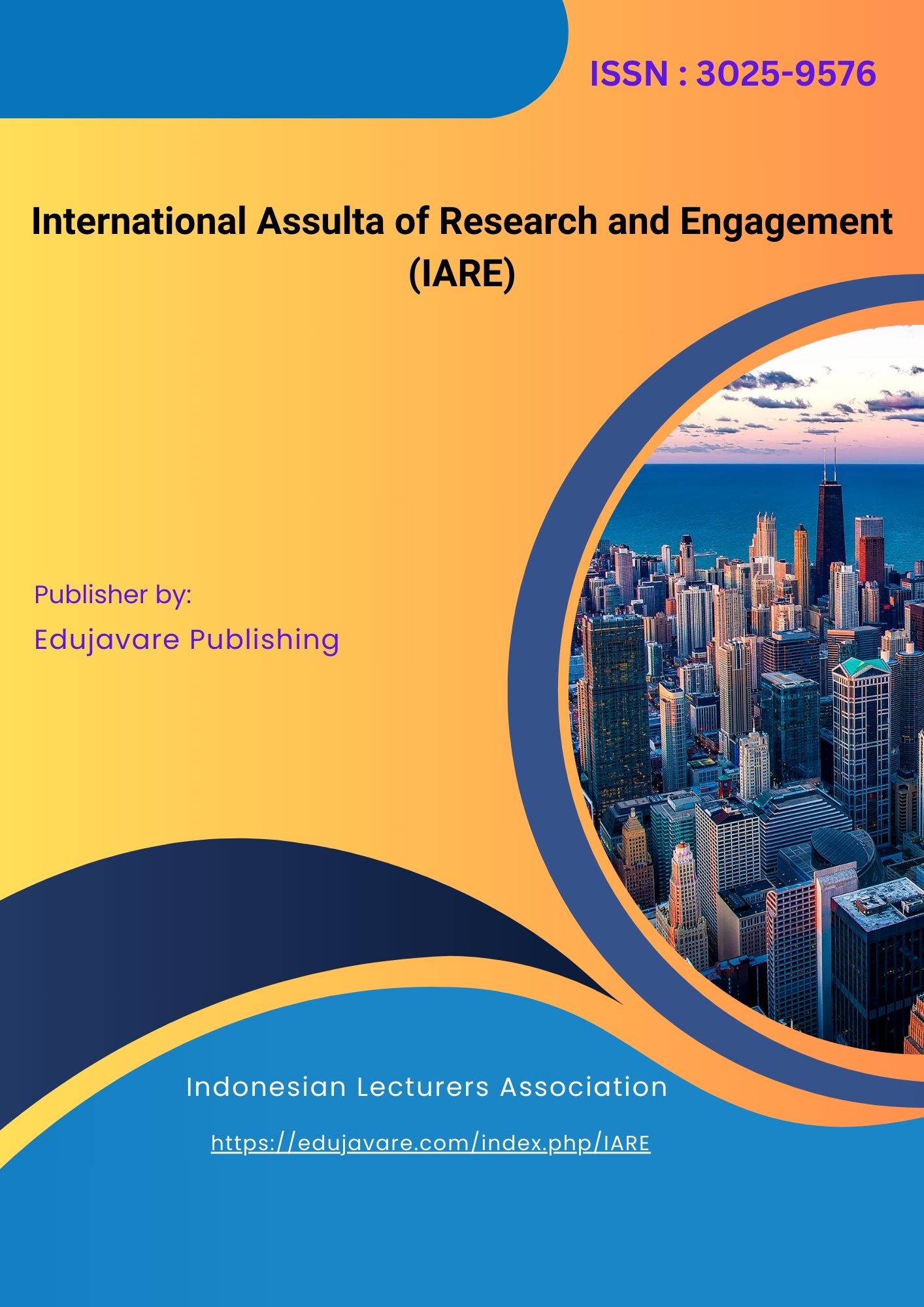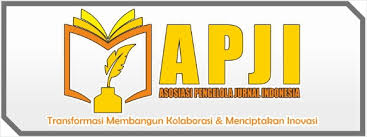Entrepreneurial Skill Development for Women in Coastal Communities
DOI:
https://doi.org/10.70610/iare.v3i1.806Keywords:
Exclusive Breastfeeding, Health Education, Pregnant Women, StuntingAbstract
Stunting is a serious nutritional problem in Indonesia that can hinder children's physical and cognitive development. Based on data on the prevalence of stunting in toddlers collected by WHO, Indonesia is among the third countries with the highest prevalence in the Southeast Asia region. One effective effort to prevent stunting is to provide exclusive breastfeeding to babies from birth by one of the goals of the SDG (Sustainable Development Goals) program, namely ending all forms of malnutrition with a strategic plan (rastra) to increase the percentage of babies under 6 months who receive exclusive breastfeeding. This community service activity aims to provide education about Exclusive Breastfeeding for pregnant women as an effort to reduce the incidence of stunting. This community service method uses Participatory Rural Appraisal (PRA) with educational counseling techniques assisted by flip sheet media. This community service activity targets pregnant women at the Polindes in Selebung Village, Aik Darek Health Center, Batukliang District, Central Lombok Regency. The results of this community service activity show an increase in pregnant women's understanding of Exclusive Breastfeeding. It is hoped that by increasing the knowledge and awareness of pregnant women, there will be a decrease in stunting rates in Selebung Village, as well as improving the quality of maternal and child health in the area.
References
P. A. Prabowo, B. Supriyono, I. Noor, and M. K. Muluk, “Special autonomy policy evaluation to improve community welfare in Papua province Indonesia,” Int. J. Excell. Gov., vol. 2, no. 1, pp. 24–40, Jan. 2021, doi: 10.1108/ijeg-06-2019-0011.
T. Muliati, N. A., and W. O. Piliana, “Social Economic Condition Of Fishermen Community In Tanjung Tiram Village, North Moramo District, South Konawe Regency,” J. Sos. Ekon. FPIK UHO, vol. 3, no. 3, pp. 216–228, 2018.
D. Fitriani and U. bin Abdul Aziz, “The use of storytelling techniques in extratextual activities for the development of children’s expressive language skills,” Gend. Equal. Int. J. Child Gend. Stud., vol. 7, no. 2, pp. 212–227, 2021.
F. Farooq, M. M. Quraishy, M. U. Hassan, M. Hussain, and F. Mushtaq, “Pattern and Magnitude of Ocular Trauma Sustained in Road Traffic Accidents (A Trauma Centre Study),” Pakistan J. Ophthalmol., vol. 38, no. 4, 2022, doi: 10.36351/pjo.v38i4.1441.
A. A. Okunade and A. R. Osmani, “Effects of life expectancy on economic growth: new results using the flexible Box–Cox power transformation model,” Appl. Econ. Lett., vol. 27, no. 20, pp. 1681–1684, 2020, doi: 10.1080/13504851.2020.1713976.
E. Desembrianita, A. Zahruddin, and Z. Arifin, “Analysis of Public Policy as Catalyst for Entrepreneurship Growth and Innovation,” West Sci. J. Econ. Entrep., vol. 1, no. 03, pp. 181–187, 2023.
M. W. N. Manafe, M. R. Ohara, S. S. Gadzali, M. A. K. Harahap, and A. M. A. Ausat, “Exploring the Relationship Between Entrepreneurial Mindsets and Business Success: Implications for Entrepreneurship Education,” J. Educ., vol. 5, no. 4, pp. 12540–12547, 2023.
R. Ripno, T. C. Nathalia, and R. Pramomo, “Waste Management in Supporting Sustainable Tourism Case Study of Touris Destination Malioboro Yogyakarta,” Int. J. Soc. Policy Law, vol. 2, no. 2, pp. 1–4, 2021.
M. A. Nasution, Z. M. E. Siregar, and ..., “Strengthening Bumdes through Customer Satisfaction and Loyalty as the Defense of the Bumdes Business in Indonesia Post-Covid-19,” Budapest Int. Res. Critics Inst. Humanit. Soc. Sci., vol. 4, no. 3, pp. 3962–3970, 2021.
N. Doytch, “The impact of foreign direct investment on the ecological footprints of nations,” Environ. Sustain. Indic., vol. 8, p. 100085, 2020.
B. B. Boley, E. Ayscue, N. Maruyama, and K. M. Woosnam, “Gender and empowerment: assessing discrepancies using the resident empowerment through tourism scale,” J. Sustain. Tour., vol. 25, no. 1, pp. 113–129, 2017, doi: 10.1080/09669582.2016.1177065.
I. Elshaer, M. Moustafa, A. E. Sobaih, M. Aliedan, and A. M. S. Azazz, “The impact of women’s empowerment on sustainable tourism development: Mediating role of tourism involvement,” Tour. Manag. Perspect., vol. 38, no. June 2020, 2021, doi: 10.1016/j.tmp.2021.100815.
M. Zaim, Refnaldi, and S. Arsyad, “Authentic assessment for speaking skills: Problem and solution for english secondary school teachers in Indonesia,” Int. J. Instr., vol. 13, no. 3, 2020, doi: 10.29333/iji.2020.13340a.
M. J. Lascano Pérez and S. P. Altamirano Carvajal, “Think-Pair-Share strategy in speaking skill development,” ConcienciaDigital, vol. 6, no. 1.4, 2023, doi: 10.33262/concienciadigital.v6i1.4.2039.
T. M. Kintu et al., “Exploring drivers and barriers to the utilization of community client-led ART delivery model in South-Western Uganda: patients’ and health workers’ experiences,” BMC Health Serv. Res., vol. 21, no. 1, pp. 1–14, 2021.
A. Dabbous, K. A. Barakat, and S. Kraus, “The impact of digitalization on entrepreneurial activity and sustainable competitiveness: A panel data analysis,” Technol. Soc., vol. 73, p. 102224, 2023.
M. J. Neuman and S. Powers, “Political prioritization of early childhood education in low-and middle-income countries,” Int. J. Educ. Dev., vol. 86, p. 102458, 2021.
S. Chowdhury et al., “Unlocking the value of artificial intelligence in human resource management through AI capability framework,” Hum. Resour. Manag. Rev., vol. 33, no. 1, p. 100899, 2023.
F. Yunda Sari, Y. Sapta Pranoto, R. Purwasih, J. Agribisnis, and F. Pertanian Perikanan dan Biologi, “Analysis of Salted Fish (Case Study of Rebo Village, Sungailiat District, Bangka District) Analisis Usaha Ikan Asin (Studi Kasus Desa Rebo Kecamatan Sungailiat Kabupaten Bangka),” J. Integr. Agribus., vol. 2, no. 1, pp. 20–36, 2020, doi: 10.33019/jia.v2i1.xxxx.
M. Mutiani and M. Faisal, “Urgency of the 21st century skills and social capital in social studies,” Innov. Soc. Stud. J., vol. 1, no. 1, pp. 1–11, 2019.
L. Stephenson, “Collective creativity and wellbeing dispositions: Children’s perceptions of learning through drama,” Think. Ski. Creat., vol. 47, no. November 2022, p. 101188, 2023, doi: 10.1016/j.tsc.2022.101188.
R. Lee, K. Hoe Looi, M. Faulkner, and L. Neale, “The moderating influence of environment factors in an extended community of inquiry model of e-learning,” Asia Pacific J. Educ., vol. 41, no. 1, 2021, doi: 10.1080/02188791.2020.1758032.
R. Wulan and W. Sanjaya, “Developing Positive School Climate for Inclusive Education,” J. Educ. Sustain. Divers., vol. 1, no. 1, pp. 54–66, 2022.
B. Surya et al., “The complexity of space utilization and environmental pollution control in the main corridor of Makassar City, South Sulawesi, Indonesia,” Sustainability, vol. 12, no. 21, p. 9244, 2020.
S. Çop, “Achieving environmental sustainability through green transformational leadership policy: Can green team resilience help?,” Bus. Strateg. Environ., vol. 30, no. 1, pp. 671–682, 2021, doi: 10.1002/bse.2646.
Downloads
Published
How to Cite
Issue
Section
License
Copyright (c) 2025 Digvijay Pandey

This work is licensed under a Creative Commons Attribution-NonCommercial-ShareAlike 4.0 International License.
License: CC BY-SA 4.0 (Creative Commons Attribution-ShareAlike 4.0 International License)






 MoU
MoU 


